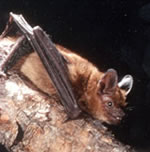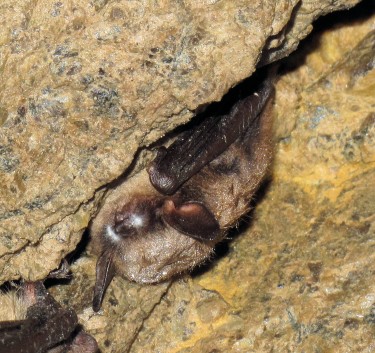Bats are in danger of extinction
Administrator | Apr 02, 2012 | Comments 1
 Canada’s three species of bats are in imminent danger of dying out, according to an emergency assessment in February by a subcommittee of COSEWIC (Committee on the Status of Endangered Wildlife in Canada). All three species are now classified as endangered. The subcommittee recommended that the Minister of the Environment give our native bat species the highest level of protection possible under the Endangered Species Act.
Canada’s three species of bats are in imminent danger of dying out, according to an emergency assessment in February by a subcommittee of COSEWIC (Committee on the Status of Endangered Wildlife in Canada). All three species are now classified as endangered. The subcommittee recommended that the Minister of the Environment give our native bat species the highest level of protection possible under the Endangered Species Act.
According to the subcommittee, the unprecedented deaths of Canada’s native bat species from white-nose syndrome pose a serious and imminent threat to the survival of each of these species. Little is known about this disease, named for the characteristic white fungal growths on the noses and wings of infected bats. White-nose syndrome interrupts the bats’ hibernation; they quickly use up the fat reserves that would normally get them through the winter and dehydrate or starve to death. The disease has now killed more than 5.7 million North American bats.
 In Canada, the tri-colored bat (previously called the eastern pipistrelle) is relatively rare and counts of this bat at a Quebec wintering area show its numbers have plummeted by 94% over two years. Recent population counts of little brown myotis in their Canadian winter quarters show declines of 94-99% within two years of exposure. Only three bat species were assessed by COSEWIC in February, however, to date, white-nose syndrome has been found in nine species of North American bats and there is grave concern for these and other species which – so far – have not been affected by the disease.
In Canada, the tri-colored bat (previously called the eastern pipistrelle) is relatively rare and counts of this bat at a Quebec wintering area show its numbers have plummeted by 94% over two years. Recent population counts of little brown myotis in their Canadian winter quarters show declines of 94-99% within two years of exposure. Only three bat species were assessed by COSEWIC in February, however, to date, white-nose syndrome has been found in nine species of North American bats and there is grave concern for these and other species which – so far – have not been affected by the disease.
1,270 bats were killed at the Wolfe Island TransAlta wind factory from July to December 2009 – an annual average of 2,540 dead bats. These numbers are very worrying, especially since bats aren’t as well understood as birds. We could be driving bats to extinction without even knowing how or why.
Stantec has published a bat report on the Ostrander Point wind turbine project. Their acoustic studies from July-August, 2008 show large numbers of these endangered bats migrating through the site. The highest numbers of myotis (2050) were detected at the shoreline.
Bats are tremendously valuable to our economy for their natural pest control on farms and in forests. US researchers have estimated that bat die-off will cost North American agriculture $3.7 billion dollars annually.
Bats may also play a major role in controlling insects that spread disease to people.
North American bats have evolved over centuries to migrate over the Great Lakes, rest and feed on our south shore. Currently 28 turbines are proposed by Gilead and wpd along the south shore or within 800 metres. Will industrial turbines built in the wrong places drive these bats to extinction?
The Prince Edward County Field Naturalists, founded in 1997, is an affiliate of Ontario Nature. It provides an educational forum dedicated to the study, promotion, appreciation and conservation of the flora and fauna within Prince Edward County. The public is welcome at the meetings held on the last Tuesday of the month from September to May, except December, at Bloomfield Town Hall. Guest speakers introduce a variety of nature related topics. All members are encouraged to participate at meetings by sharing their experiences and observations. Regularly scheduled field trips in the vicinity offer members the opportunity to experience various habitats. Membership in PECFN is open to all. Contact: Prince Edward County Field Naturalists, P.O. Box 477, Bloomfield, Ontario K0K 1G0 Or Cheryl Anderson 613-471-1096
Filed Under: News from Everywhere Else
About the Author:




































Another clear example of how Industrial Wind Turbines are not “green” at all. Not only will the extinction of bats cost farmers $3.7 billions in lost crops, expensive pesticides will have to be used to control the insects the bats used to eat. What a great “green” alternative!